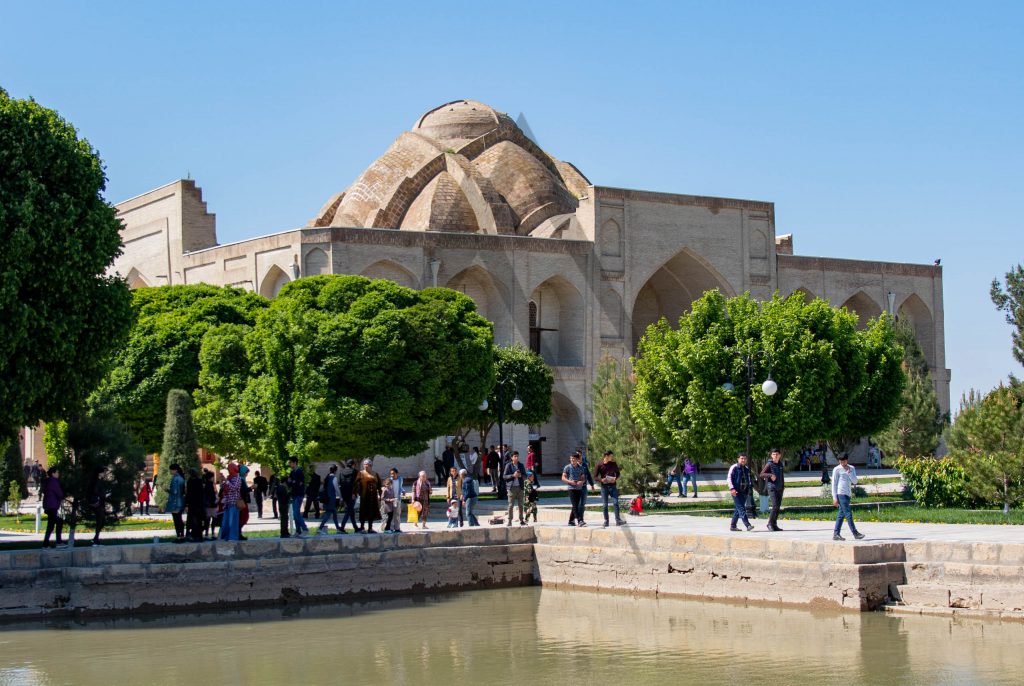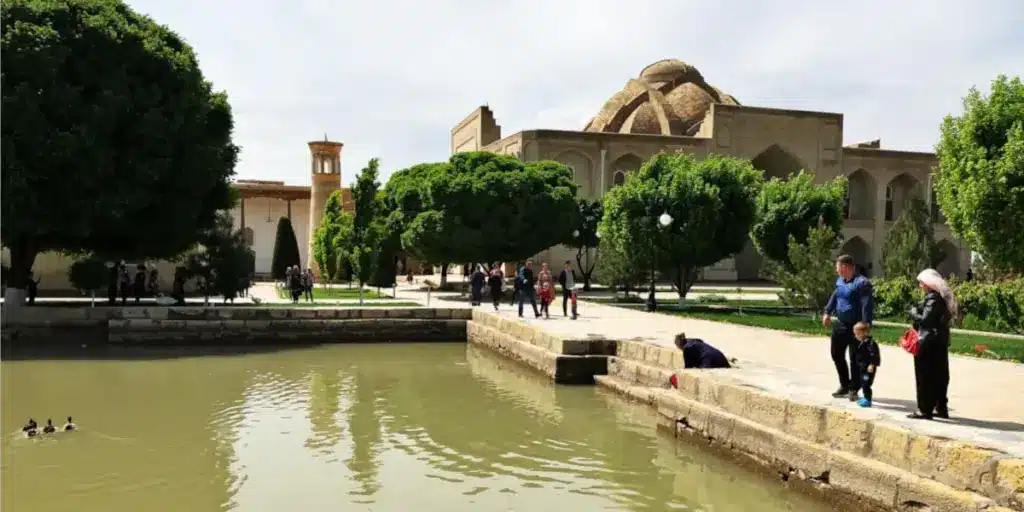Bakhauddin Naqshband Mausoleum
Bakhauddin Naqshband
Bakhauddin Complex
Baha-ud-Din Naqshband (also spelled Bahāʾ al-Dīn Naqshband, in Uzbek: Bahouddin Naqshband) was a 14th-century Sufi master and the founder of the Naqshbandi Sufi order, one of the most influential and widespread Sufi paths in the Islamic world. Baha-ud-Din was trained in spiritual disciplines by Amir Kulal, his spiritual mentor, and also followed the teachings of earlier Sufi traditions, especially those linked to the Khwajagan lineage in Central Asia.
The necropolis of Baha-ad-Din Naqshbandis is located just 10 km east of Bukhara at the site where there used to be a village called Kasri Orifon. Bakhauddin Naqshband lived from 1318 to 1389 and was a patron saint and the founder of the most important Sufic order in Central Asia. The famous Sufi made 32 hajj pilgrimages to Mecca, and today his mausoleum is also considered a Central Asian ‘Mecca’.


Locals believe that if one walks to the mausoleum from Bukhara three times, it will equal one hajj (visiting Mecca). Bakhauddin Naqshbandi was also the spiritual mentor of Tamerlane himself and, for a long time, taught him integrity and modesty. When Bakhauddin died in 1389, he was buried in a small, modest tomb. Only 150 years later, by the order of Abdalaziz Khan, the construction of a full-fledged crypt started and was only finished about four centuries later.
Visiting the Bakhauddin complex makes a nice short few-hour trip outside Buhara and can be easily combined with visiting the Sitori i Mokhi palace. There is a nice large tree to sit under for a moment and the roof structure of the dome is really different from the others that your will see Uzbekistan.


The main building has a square inner yard with the sheikh’s mausoleum and a mosque built in the 19th century. A little further there is an iwan (a rectangular hall or space, usually vaulted, walled on three sides, with one end entirely open) with wooden pillars where the Shaybanids mausoleum was. The largest building on the territory of the complex is the khanaka of Abdalaziz Khan himself, made in a luxurious style with carvings and lavish ornaments on the walls.
The whole complex was completely restored in the 1980s. Today tourists can see the tomb, minaret, a courtyard with a reservoir, dakhma, madrasah, as well as the mosques of Kushbegi and Muzafar Khan. At the yard there is a trunk of a mulberry tree, which is believed to have grown from Baha-ud-Din Naqshband’s staff. Residents say that if one crawls under the trunk with a wish made, it will certainly be fulfilled. There is also a necropolis, including sepulchers and tombs of some members of the past ruling dynasties. The complex has a museum where you can gain a lot of information on Baha-ud-Din Naqshband, his order and Sufism. There are Sufi clothes, books, cauldrons they used for cooking and many other interesting exhibits in the museum.
Sights and destinations near Bahauddin Naqshband
Page updated 6.5.2025